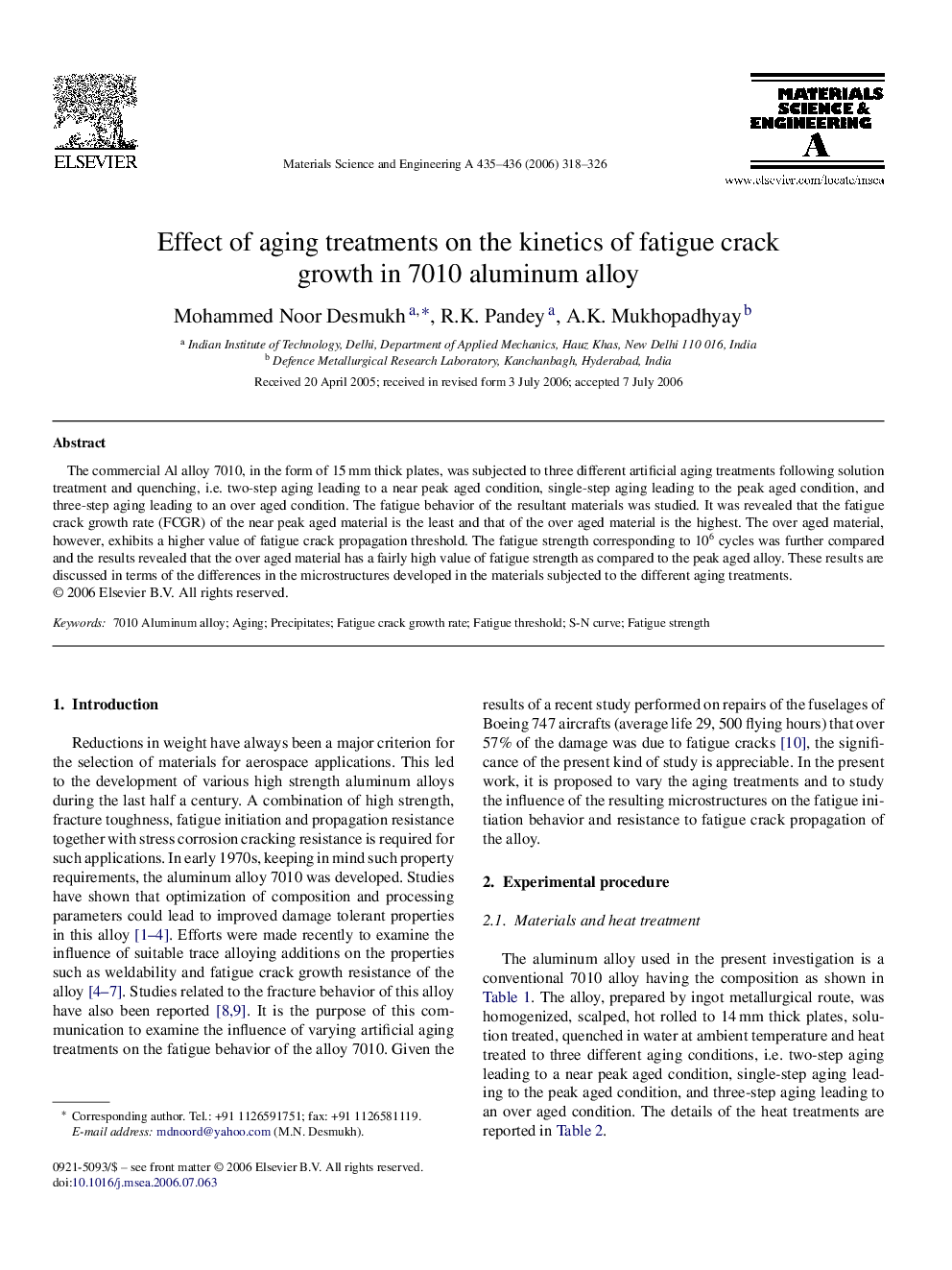| Article ID | Journal | Published Year | Pages | File Type |
|---|---|---|---|---|
| 1585137 | Materials Science and Engineering: A | 2006 | 9 Pages |
The commercial Al alloy 7010, in the form of 15 mm thick plates, was subjected to three different artificial aging treatments following solution treatment and quenching, i.e. two-step aging leading to a near peak aged condition, single-step aging leading to the peak aged condition, and three-step aging leading to an over aged condition. The fatigue behavior of the resultant materials was studied. It was revealed that the fatigue crack growth rate (FCGR) of the near peak aged material is the least and that of the over aged material is the highest. The over aged material, however, exhibits a higher value of fatigue crack propagation threshold. The fatigue strength corresponding to 106 cycles was further compared and the results revealed that the over aged material has a fairly high value of fatigue strength as compared to the peak aged alloy. These results are discussed in terms of the differences in the microstructures developed in the materials subjected to the different aging treatments.
